
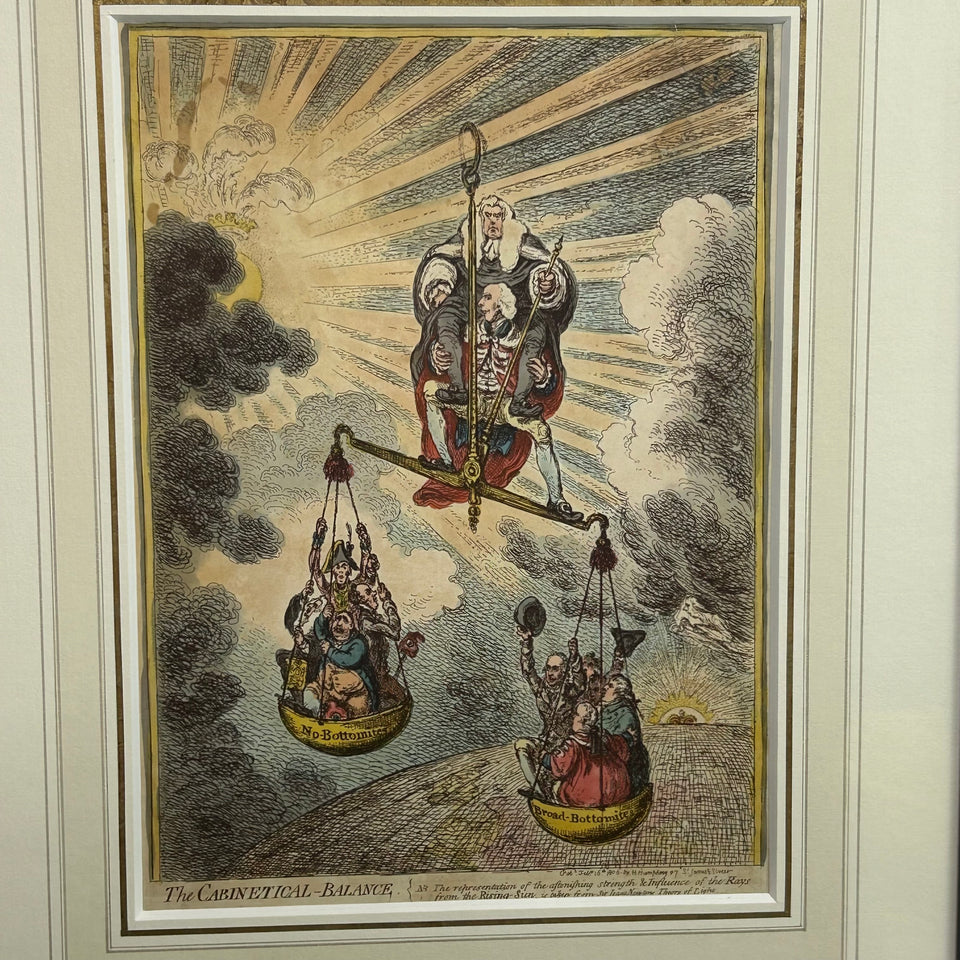
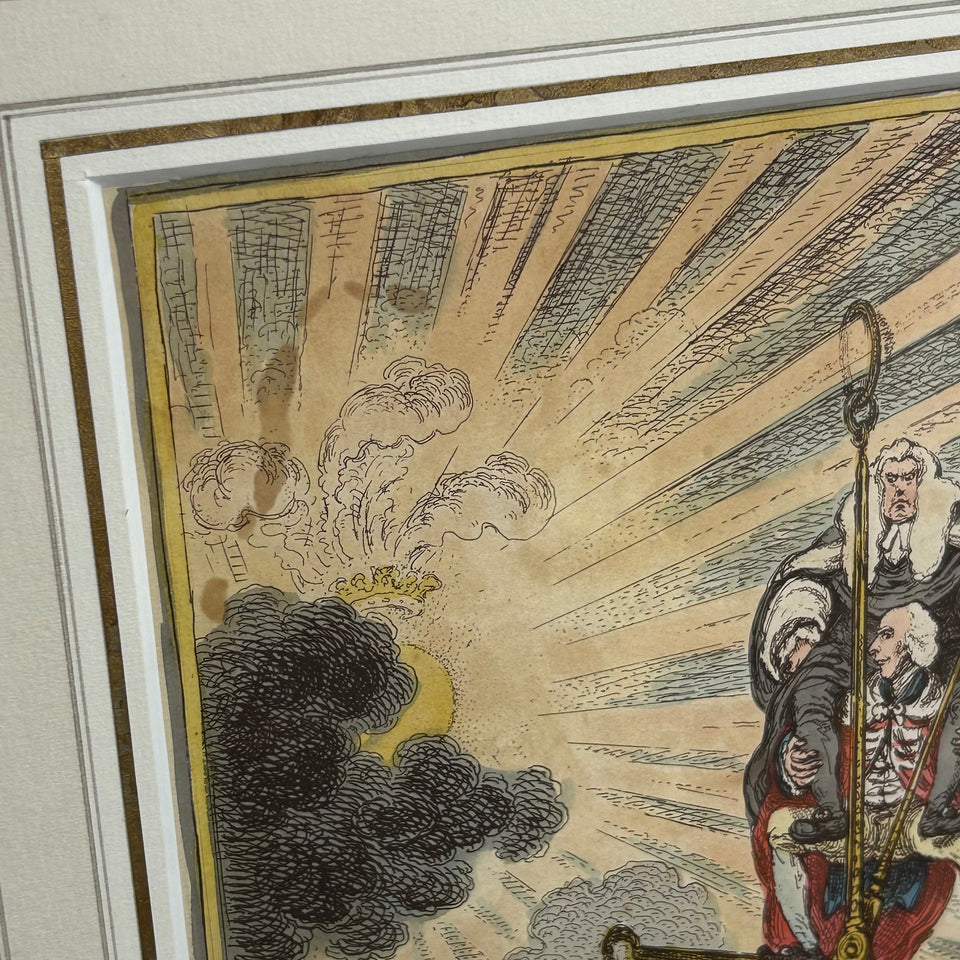
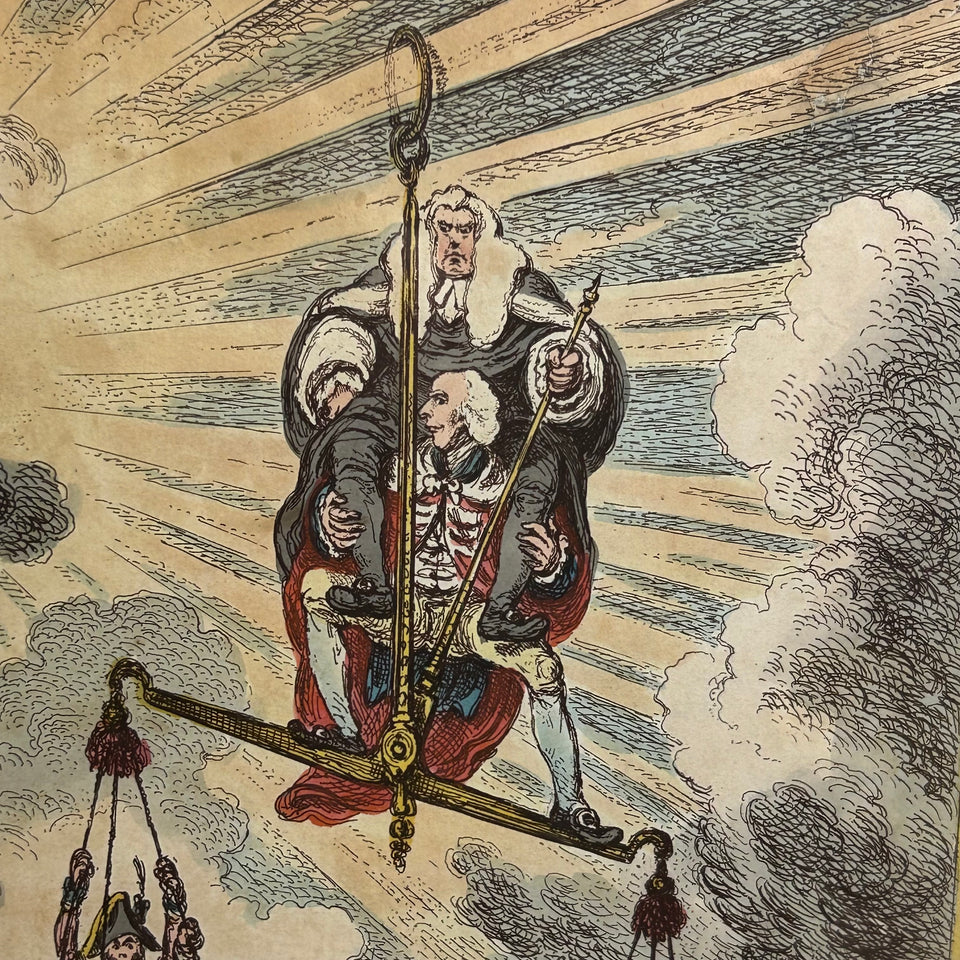
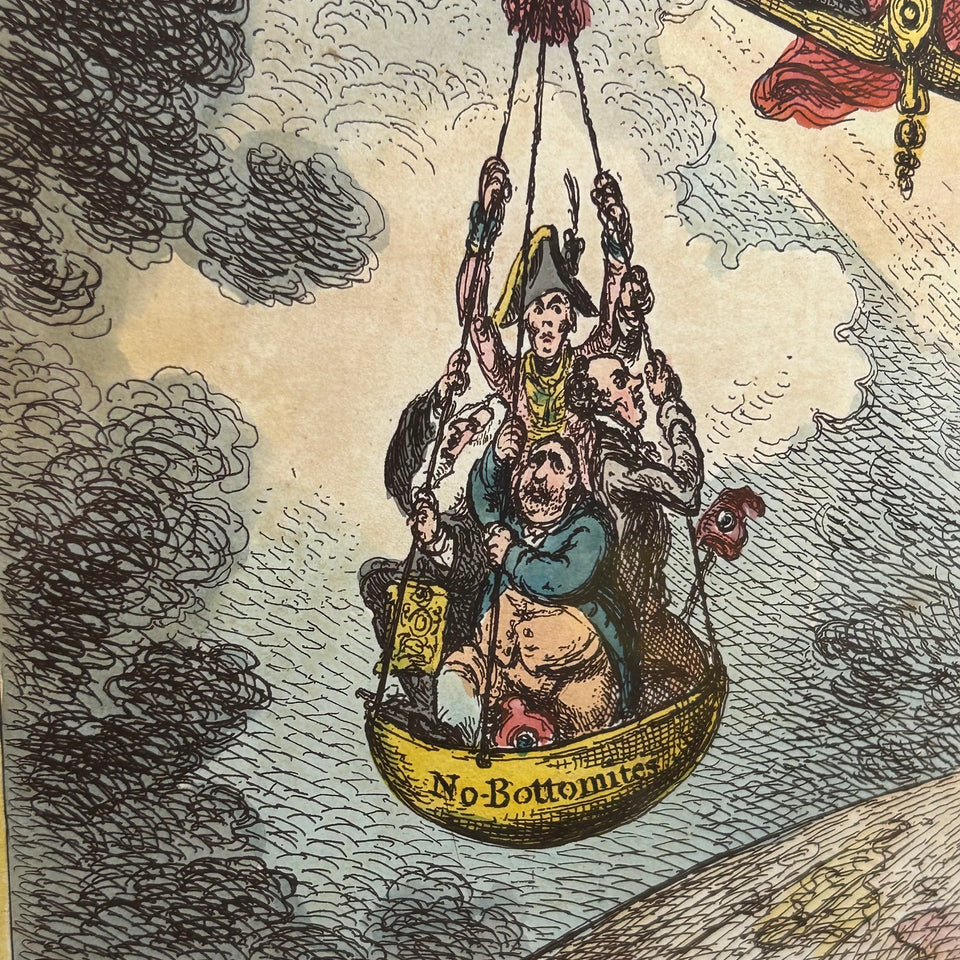
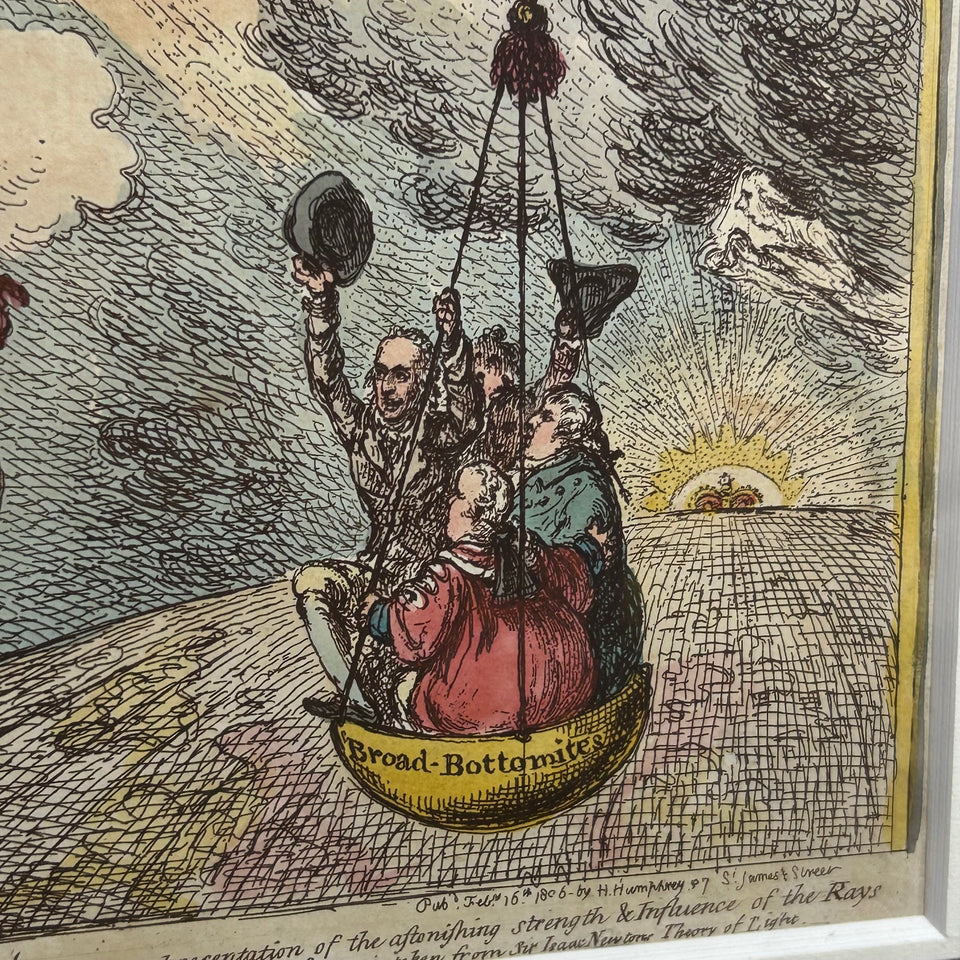
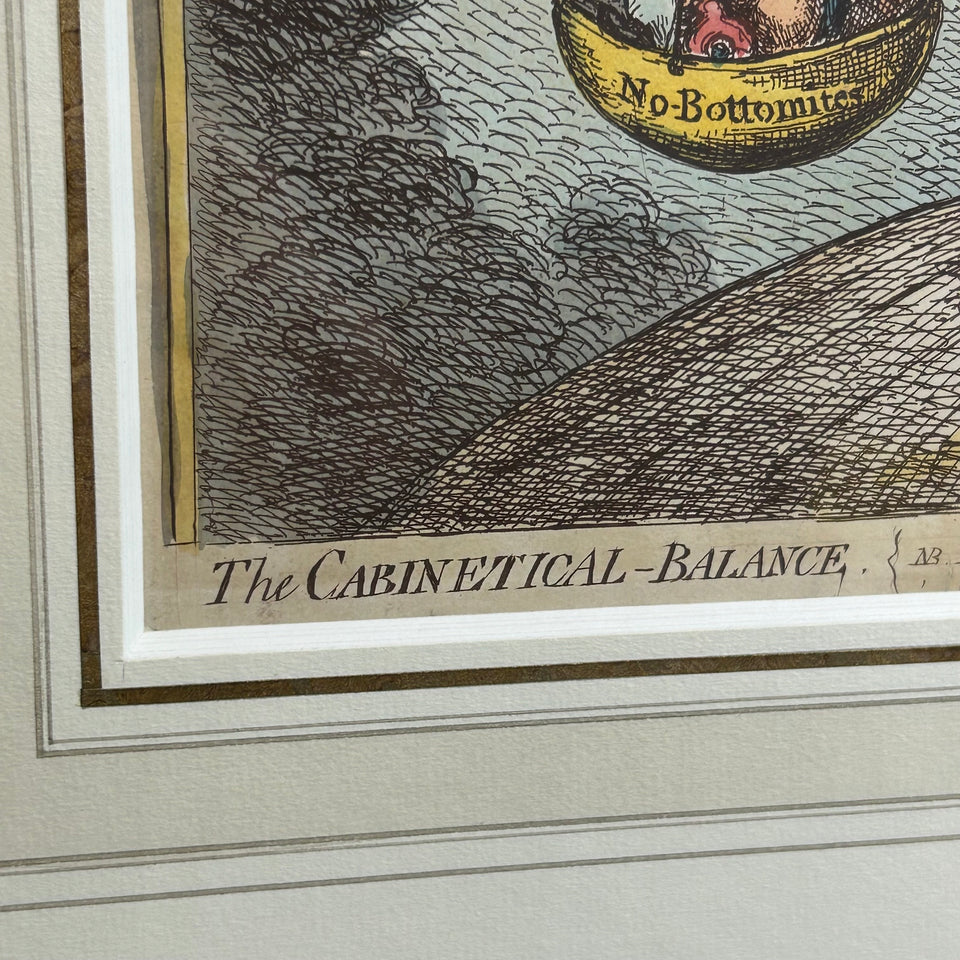
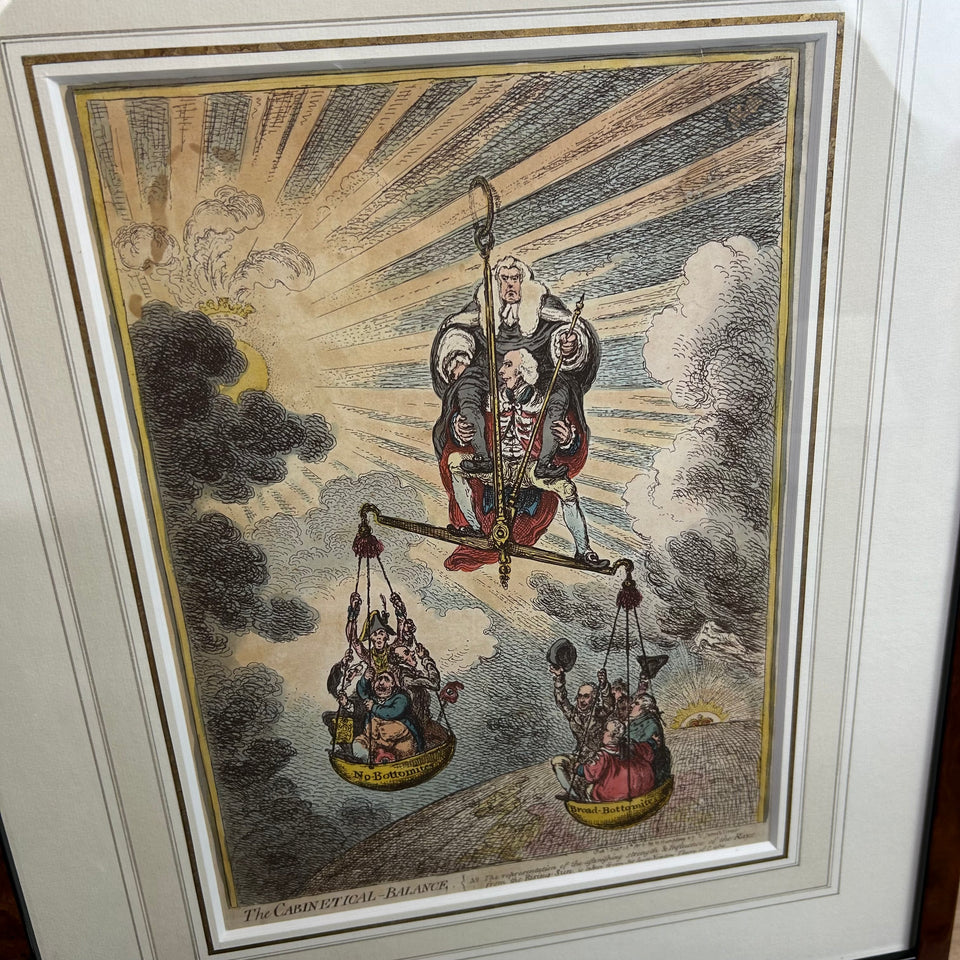

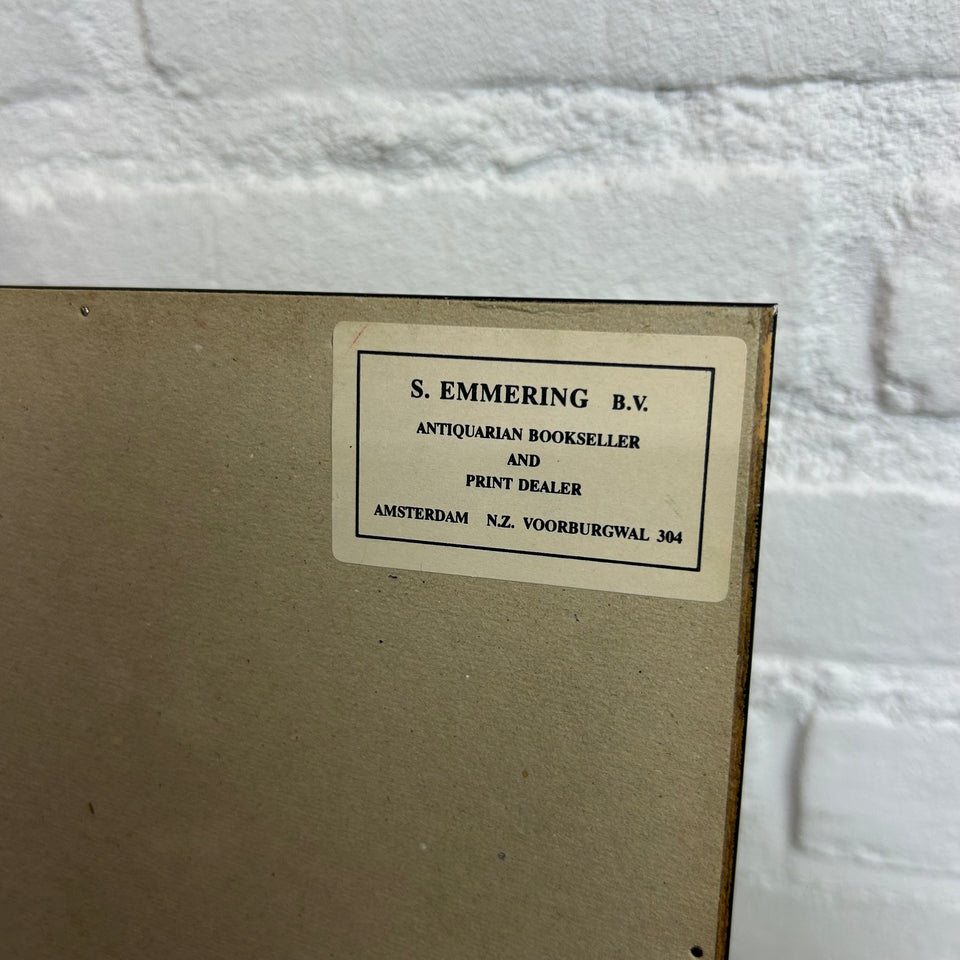
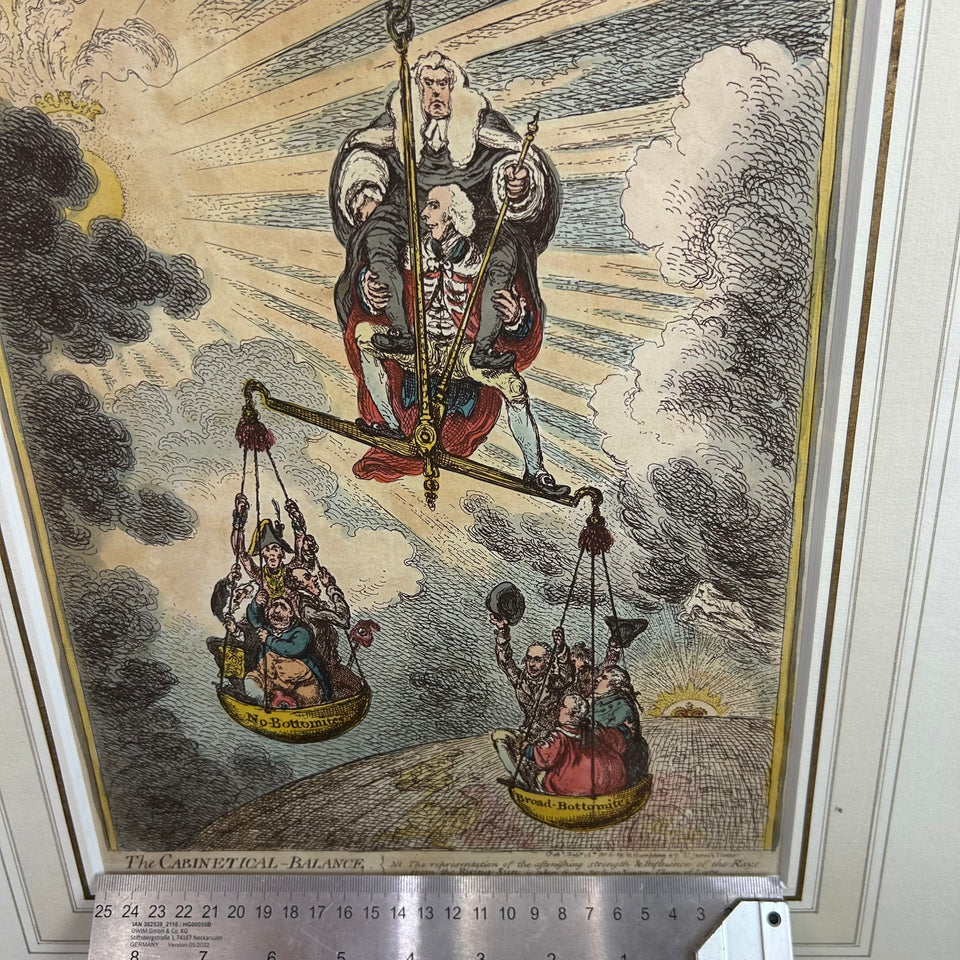
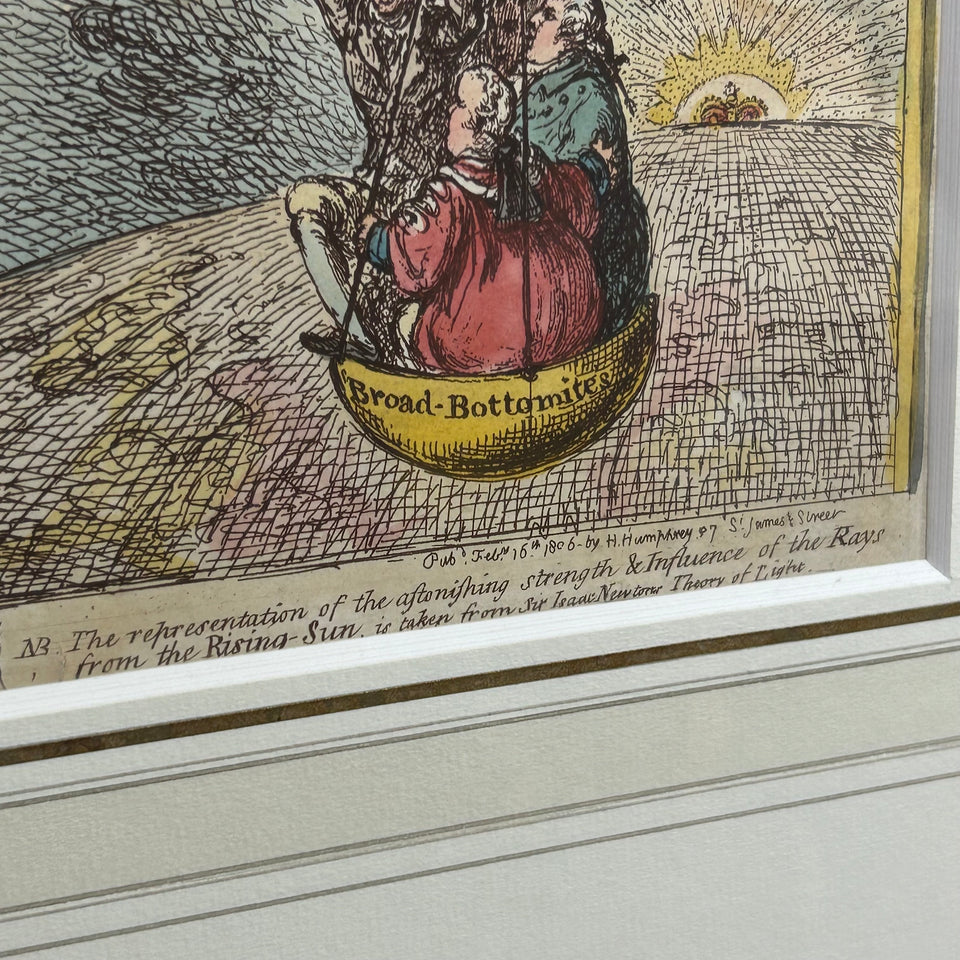
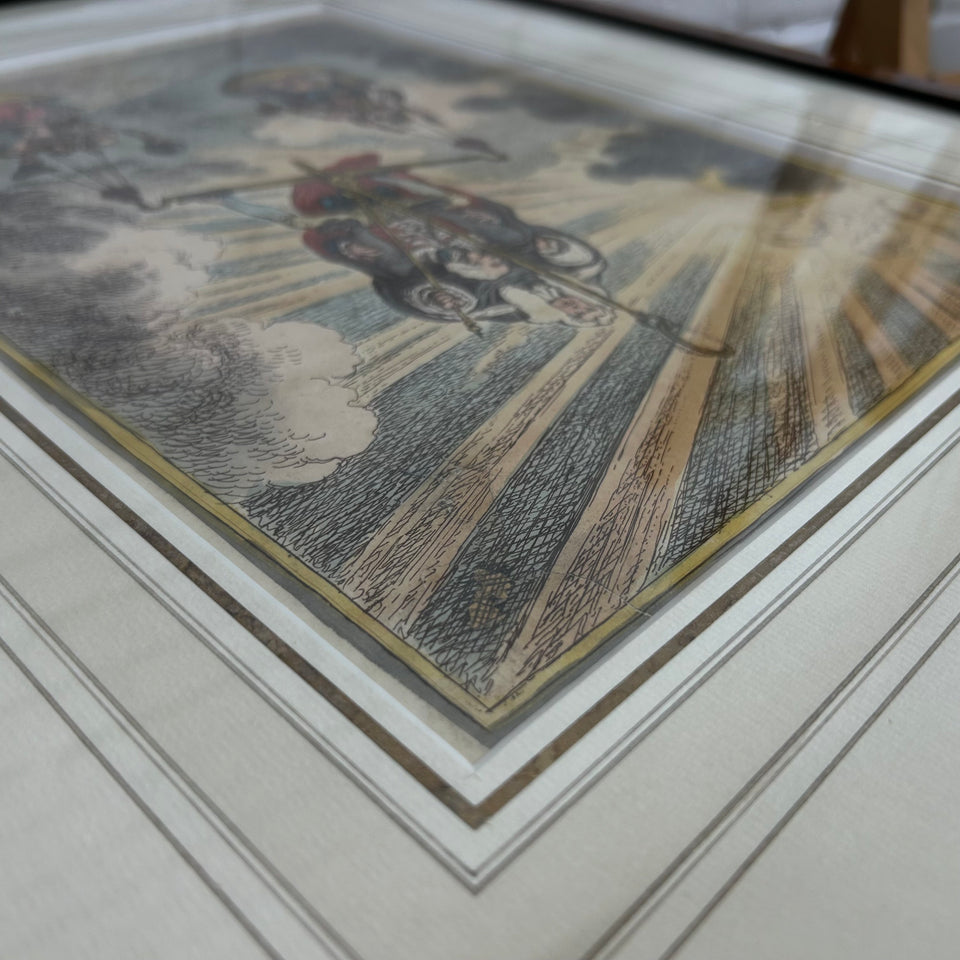
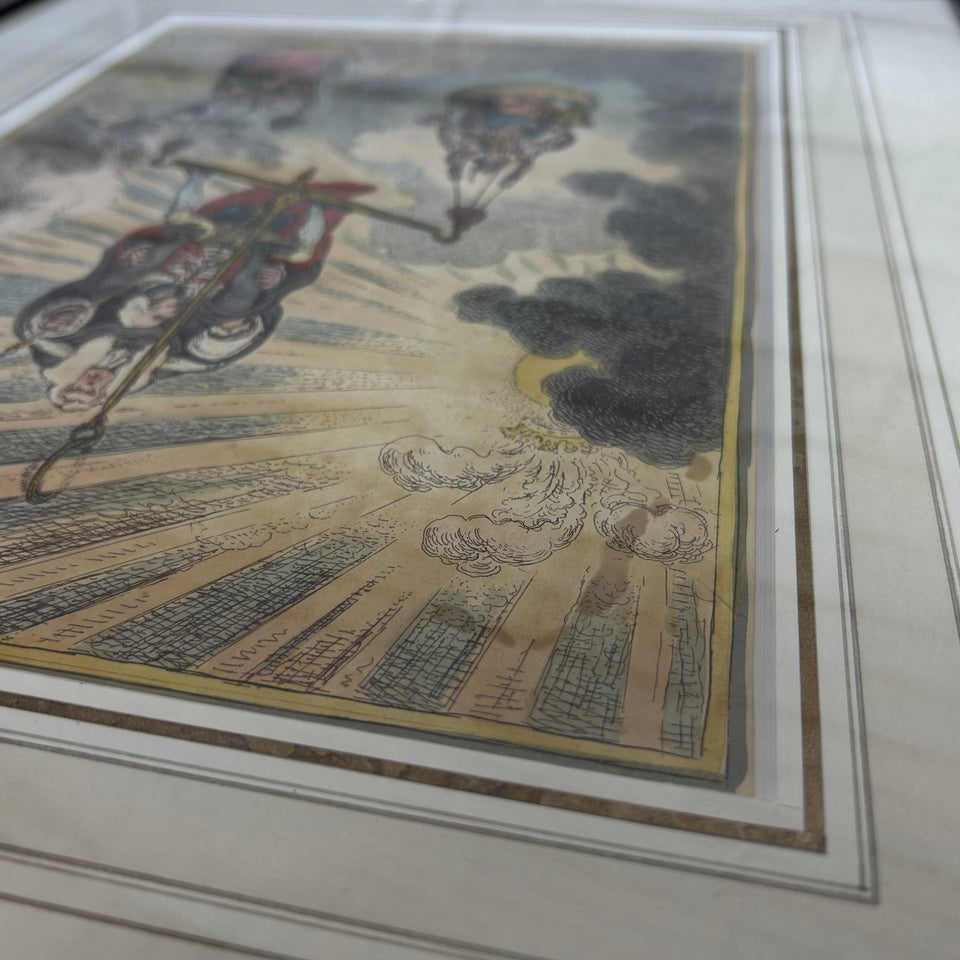
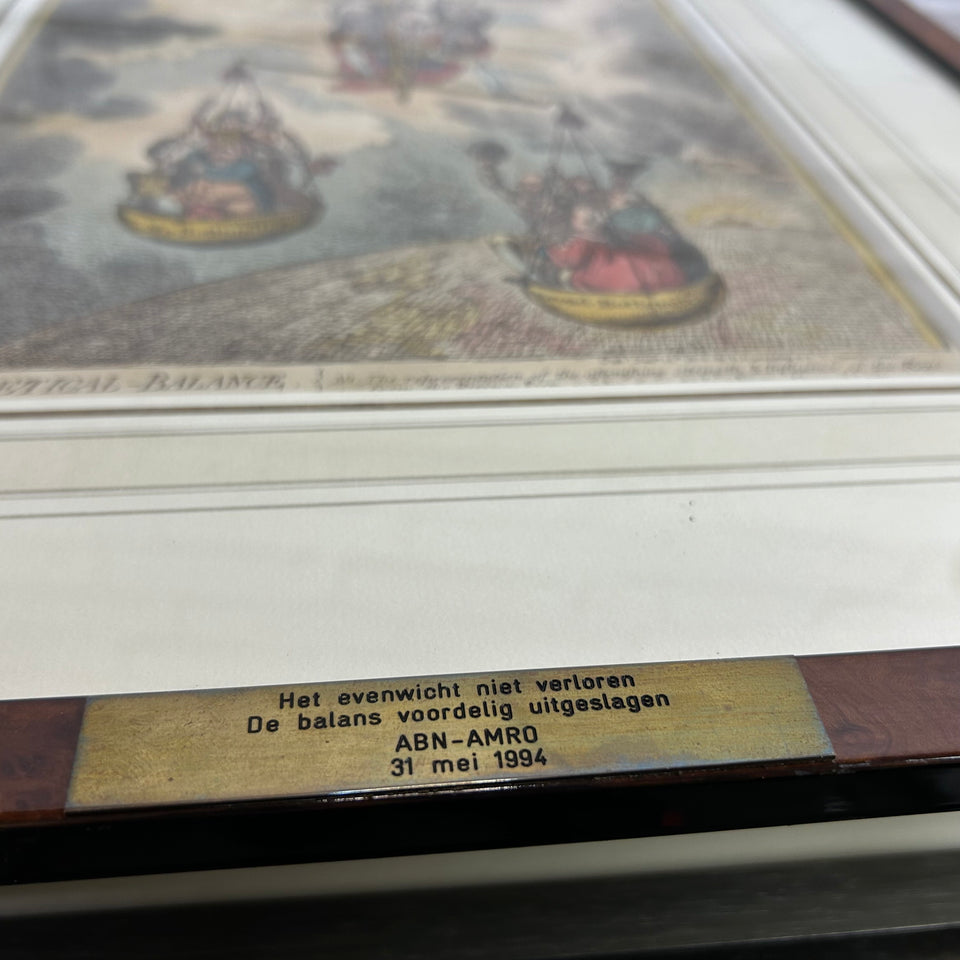
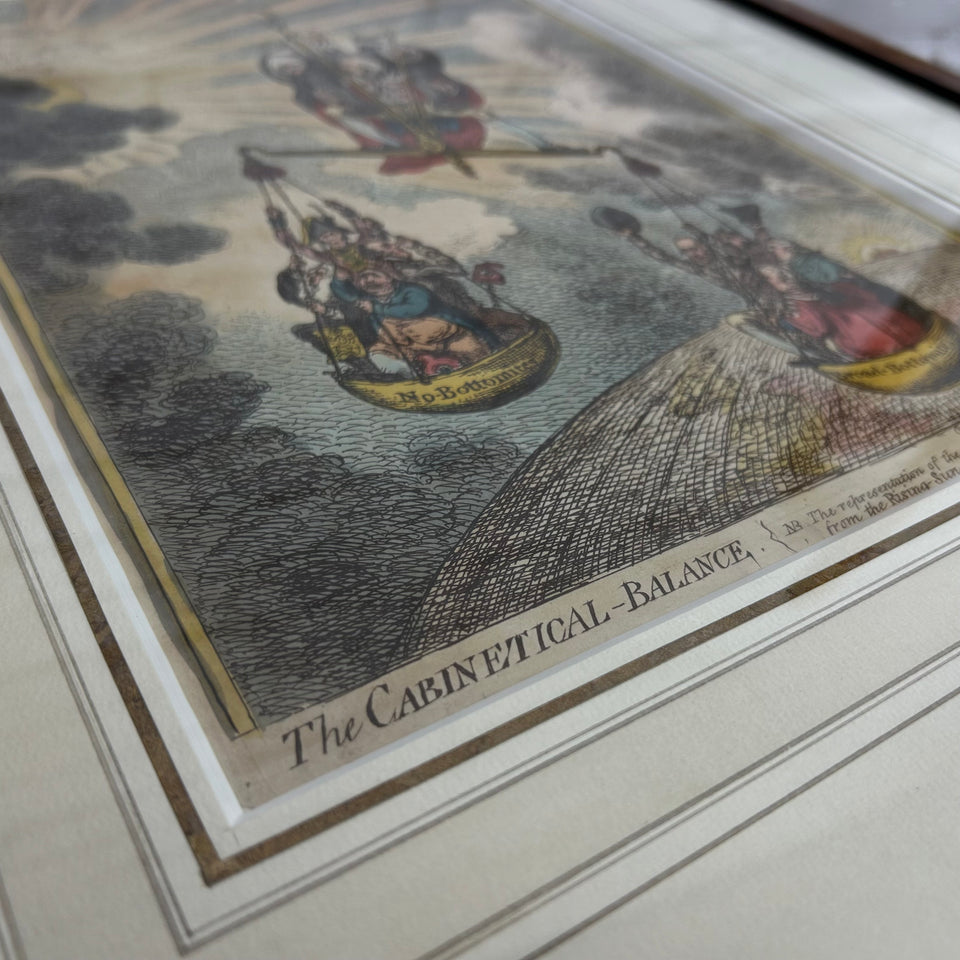
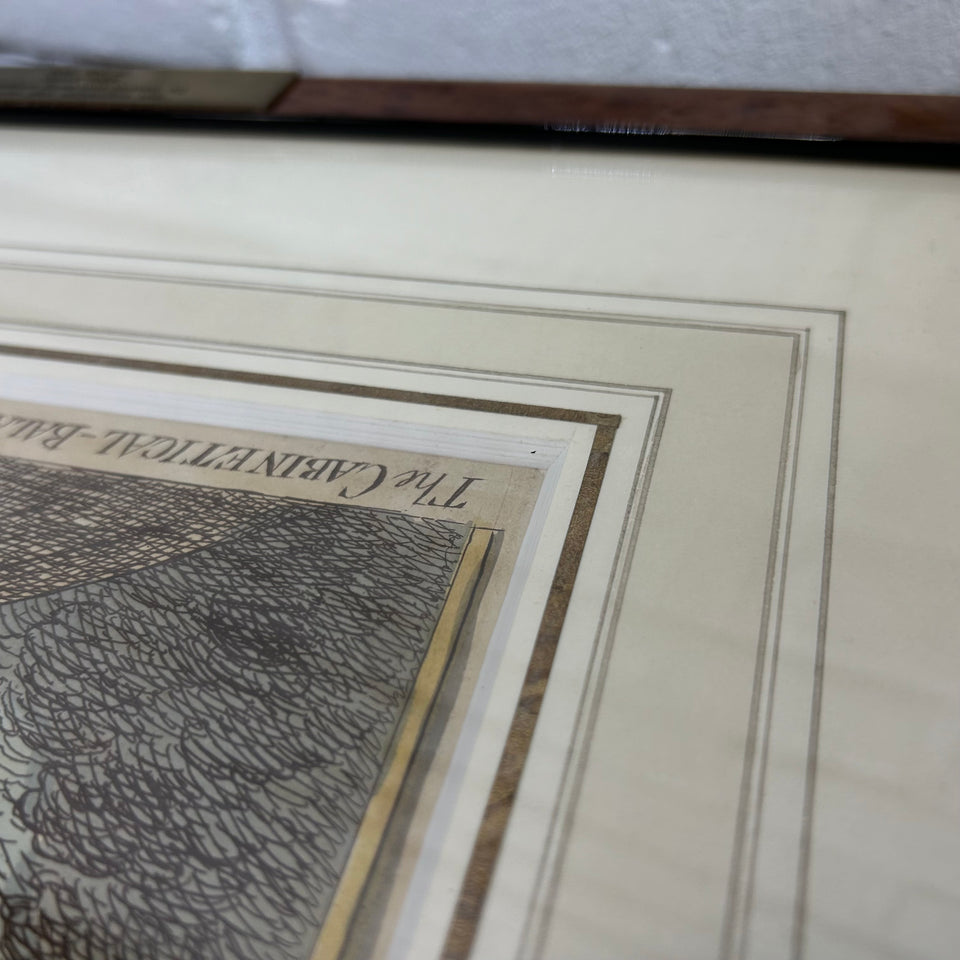
Original Rare handcolored - The Cabinetical Balance - James Gillray (1757–1815)
After the title: 'NB. The representation of, the astonishing strength & Influence of the Rays from the Rising-Sun, is taken from Sir Isaac Newtons Theory of Light.' The beam of a pair of scales is suspended from a vertical bar terminating in a ring which encircles one of many solid rays from a large sun (l.) surmounted by the Prince of Wales' coronet and feathers.
The 'Rising-Sun' is partly obscured by dark clouds, but its rays extend across the design and illuminate especially Sidmouth and Ellenborough. The former is poised triumphantly on the cross-beam, depressing the r. scale with his foot, while he holds on his shoulders Ellenborough in judge's wig and gown, who manipulates the scale in the same direction. This lower scale contains the 'Broad-Bottomites' ie the Grenvillites, or New Opposition, the other, the 'No-Bottomites', i.e. the Foxites, or Old Opposition. In the latter (l.) the occupants hold the ropes with expressions of anxiety; the inscription suggests that they lack 'bottom' or endurance (a pugilistic phrase). Fox is the most prominent, between Erskine (l.), in Chancellor's wig and gown and with the Purse of the Great Seal, and Grey (r.). Moira, in cocked hat and regimentals, stands stiffly behind.
Fox and Grey have bonnets rouges but do not wear them. The other bowl contains Grenville, one hand on his fat nephew Lord Temple; the heavy posteriors for which the family were noted take up much of the bowl. Windham waves his hat triumphantly. Of two other partly obscured occupants one resembles Lord Henry Petty. The scales are suspended above the curve of the globe on which Great Britain and the Continent are indicated. Behind the North Pole (r.) is a setting sun containing a royal crown; its feeble rays are outshone by the heavy beams of the rising sun (or son). Above it, among clouds, flies the ghost of Pitt, weeping. 16 February 1806
Hand-coloured etching framed behind glass.
James Gillray (13 August 1756 or 1757 – 1 June 1815) was a British caricaturist and printmaker famous for his etched political and social satires, mainly published between 1792 and 1810. Many of his works are held at the National Portrait Gallery in London.
Gillray has been called "the father of the political cartoon", with his works satirizing George III, prime ministers and generals. Regarded as being one of the two most influential cartoonists, the other being William Hogarth, Gillray's wit and humour, knowledge of life, fertility of resource, keen sense of the ludicrous, and beauty of execution, at once gave him the first place among caricaturists.
